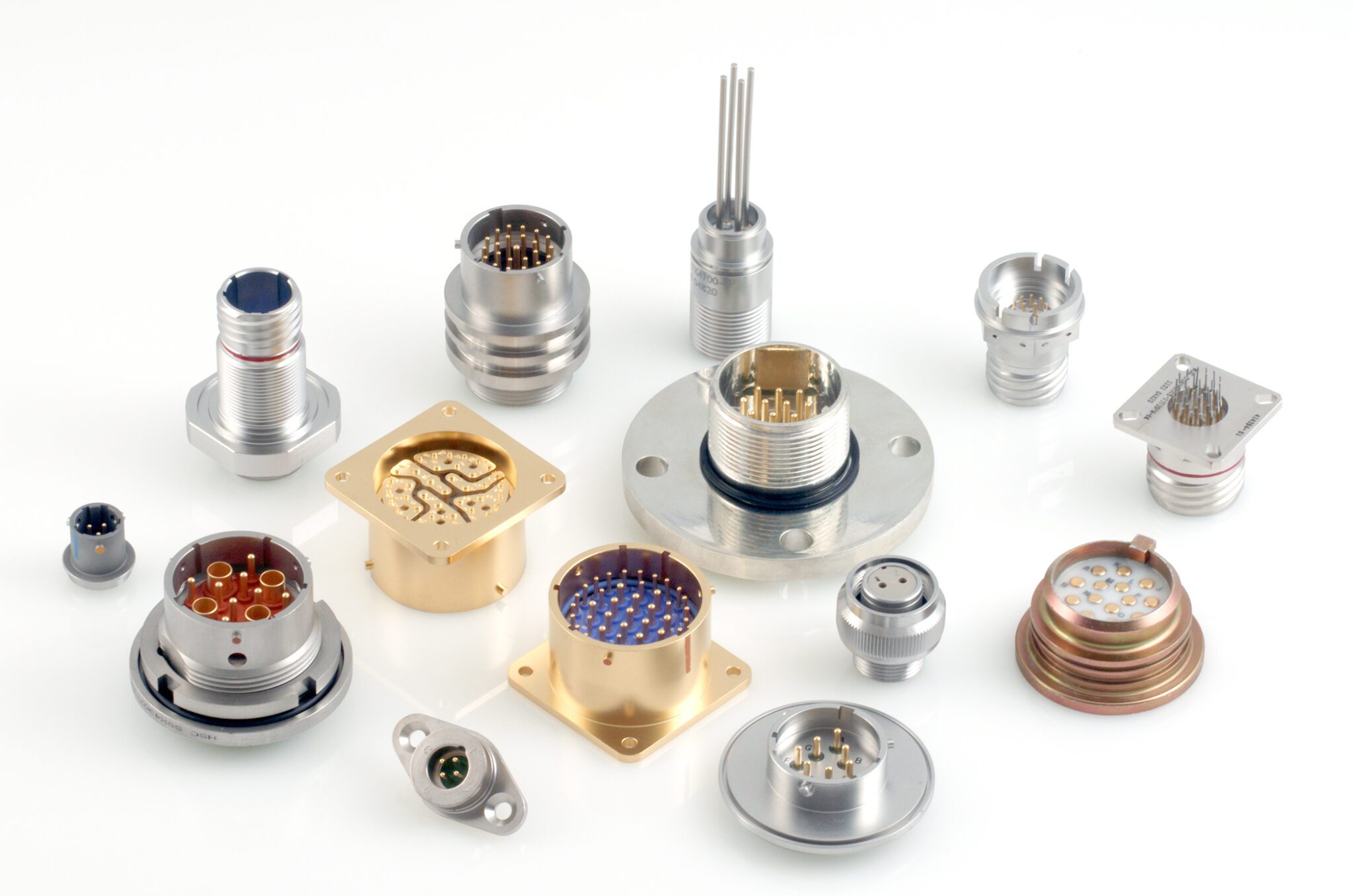Harsh Conditions Call for Hermetically Sealed Connectors
Moisture, debris, vibration, pressure, and fluctuating temperatures make industrial, transportation, military, and aerospace environments challenging for electronics. Hermetically sealed connectors keep sensitive electronic systems safe.

Electronic connectors are constructed from plastic and metal parts that allow moisture, air, and gases to leak into the device. A hermetic connector blocks all gases from passing through points of connection and protects the electric signal from external elements. While hermetic connectors represent a minor part of a system’s cost, they’re absolutely essential to ensure critical equipment reliability in harsh and extreme environments. Hermetic connectors come in two versions:
Matched seal: In matched seal hermetic connectors, the body, electrodes, and glass coefficients of thermal expansion (CTEs) are similar, if not the same. A chemical bond between the oxides that are formed on the body, electrodes, and glass creates the hermetic seal.
Compression seal: In compression seal hermetic connectors, the body, electrodes, and glass CTEs are different. The higher-body CTE creates compressive stresses on the glass and electrodes that, along with the bond that is formed between all of the component’s oxides, form the hermetic seal.

Hermetic circular EN2997 connectors from Hermetic Seal.
As innovative electronic applications move into harsh environments, design engineers need to specify advanced connectivity solutions that can endure moisture, debris, shock, vibration, pressure, gases, and fluctuating temperatures.
While many of these environmental factors are inherently a part of the day-to-day, they can create impediments to the uninterrupted flow of power and data to equipment in harsh industrial environments like factories and extraction industries; or transportation environments like automobiles, rail, and marine. But few sectors can compare to the intensity of the commercial, military, and space aerospace sector. And hermetically sealed connectors play a vital role across the board.
- The aerospace industry uses hermetic connectors, hermetically sealed terminals, and hermetically sealed headers throughout an aircraft, including but not limited to wings, landing gear, engines, fuel systems, and the delicate electronics within the black box.
- The petrochemical industry uses hermetic components to protect sensors and electronics in downhole drilling exploration equipment which is exposed to dirt, oil, grime, and extreme pressure.
- The optical networking industry uses hermetics to protect delicate circuitry in underground
- The medical industry uses hermetics in implantable devices that must endure conditions within the human body.
- The automotive industry uses hermetic connectors to ensure sensor functionality in rollover devices and airbag equipment.

Electronics used in the petrochemical industry require hermetic connectors to protect against ingress of water, chemicals, steam, pressure, debris, and other harsh conditions.
Today, cutting-edge advancements in connectivity have evolved to protect the performance of electronics in challenging operating environments. Hermetically sealed connectors are being constructed from much more durable materials and now incorporate a wide variety of seals and gaskets. They also feature special rugged designs that ensure reliable performance under extreme harsh environment conditions. An experienced supplier can help specify the correct solution for the specific conditions the equipment will face.
Hundreds of standard, off-the-shelf connector products are available to serve a wide variety of package designs and operating conditions. However, electronic systems that are undergoing a period of design innovation may require custom connectors with unique dimensions, performance features, or other attributes.
Custom connectors for sensitive components
It’s common for suppliers to customize military standard connector designs. In fact, most requests for custom components are based on QPL products, such as MIL-DTL-26482, 38999, and 83723. Customization can involve changes to an existing product’s size, form, materials, and more. For example, an OEM might specify an alternate material such as titanium and aluminum to add strength while reducing weight in a hand-held or airborne system that prioritizes portability or low payload.
Other changes include custom pin counts, new insert arrangements, and/or longer pins for PC tails. In fact, most customizations are most often performed on the wiring end of the connector. Why? Because the connector’s mating end must conform to MIL-SPEC and cannot be modified.
Successful customizations depend on an experienced supplier partner
Selecting a supplier partner with extensive expertise in harsh environment applications is the first step in creating a successful custom hermetic connector design. The creation of a successful connector modification is a precision exercise that requires expertise in mechanical and materials sciences, as well as electrical engineering. Suppliers that specialize in these products can provide higher levels of customization and greater performance in challenging aerospace environments.
Other changes include custom pin counts, new insert arrangements, and/or longer pins for PC tails. These changes must be considered in context of the configuration of the PCB. For instance, some circuit boards are next to the flange and others are on its backside. The flange width or the size of the flange mounting holes will differ from instance to instance.
To learn more about what to consider when customizing hermetic connectors, download our free whitepaper today.

To learn more about custom hermetic connectors for aerospace applications, visit Hermetic Seal.
Subscribe to our weekly e-newsletters, follow us on LinkedIn, Twitter, and Facebook, and check out our eBook archives for more applicable, expert-informed connectivity content.
- Harsh Conditions Call for Hermetically Sealed Connectors - November 8, 2022
- Planning High-Reliability Aerospace Systems with Hermetic Connectors - September 27, 2022






